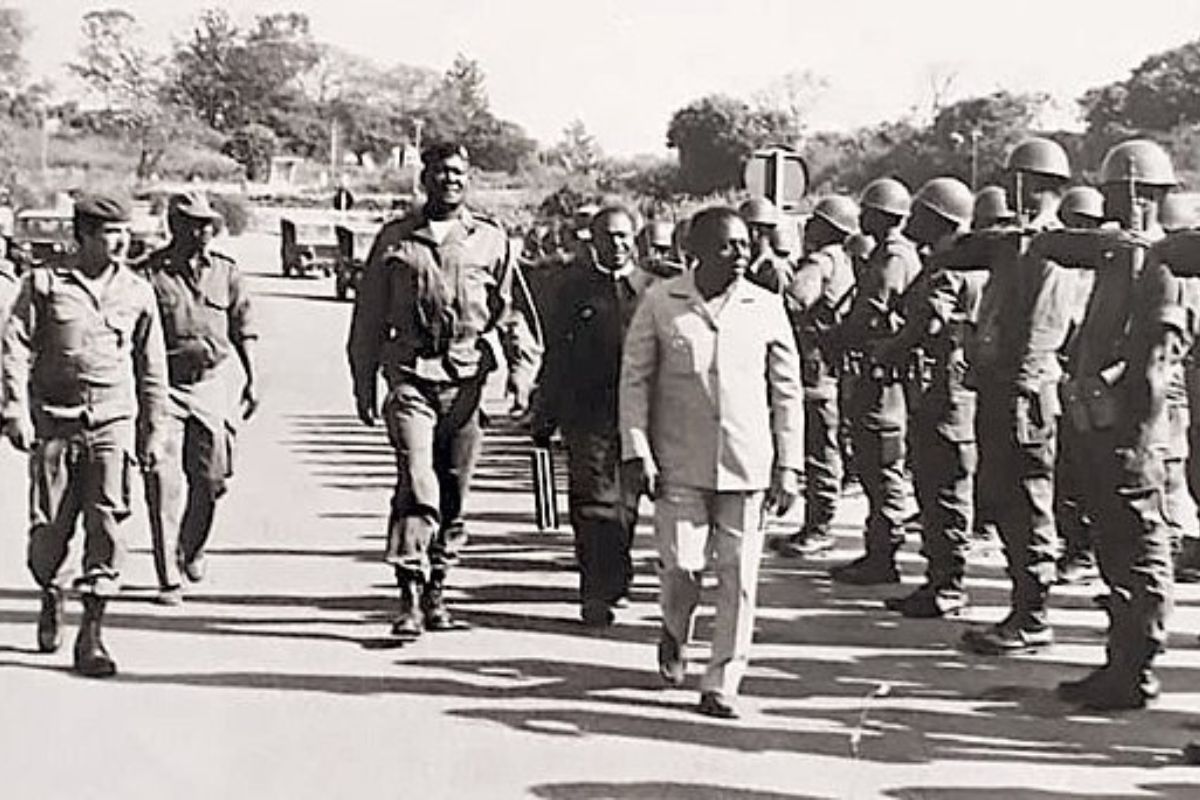
Shaba II is a region in the Democratic Republic of Congo known for its rich mineral resources and diverse wildlife. But how much do you really know about this fascinating place? From its unique geography to its cultural heritage, Shaba II offers a wealth of intriguing facts that might surprise you. Did you know that it is home to some of the world's largest copper and cobalt mines? Or that it boasts a variety of ecosystems, from savannas to dense forests? Shaba II isn't just about minerals; it's a land of contrasts and surprises. Ready to learn more? Let's dive into 25 captivating facts about this remarkable region!
Key Takeaways:
- Shaba II, also known as the Second Shaba War, was a conflict in the late 1970s between Zaire and the FNLC rebels, with support from various nations. It had far-reaching impacts on the region and international relations.
- The conflict reflected the larger geopolitical tensions of the Cold War, involving key players like Zaire, Angola, France, Belgium, the United States, and others. It led to strengthened military, political, and economic impacts in the region.
Shaba II: A Glimpse into History
Shaba II, also known as the Second Shaba War, was a significant conflict in African history. It took place in the late 1970s and involved multiple nations. Here are some intriguing facts about this historical event.
-
Shaba II occurred in 1978. The conflict lasted from May 11 to June 5, 1978.
-
It was a sequel to Shaba I. Shaba I happened in 1977, just a year before Shaba II.
-
The conflict took place in the Shaba Province. This region is now known as Katanga in the Democratic Republic of the Congo (DRC).
-
The war was between Zaire and the FNLC. Zaire, now the DRC, fought against the Front for the National Liberation of the Congo (FNLC).
-
The FNLC was supported by Angola. Angola provided significant backing to the FNLC rebels.
-
Zaire received international support. Countries like France, Belgium, and the United States aided Zaire.
-
The conflict was part of the Cold War. It reflected the larger geopolitical tensions between the East and West.
-
Mobutu Sese Seko was the President of Zaire. He led the country during both Shaba conflicts.
-
The FNLC aimed to overthrow Mobutu. Their goal was to end his authoritarian rule.
-
The war caused significant displacement. Thousands of civilians fled their homes due to the fighting.
Key Players and Nations Involved
Understanding the main actors in Shaba II helps grasp the complexity of the conflict. Here are some key players and nations involved.
-
France played a crucial role. French paratroopers were deployed to support Zaire.
-
Belgium also sent troops. Belgian forces helped evacuate European expatriates.
-
The United States provided logistical support. This included airlifting French troops to the conflict zone.
-
Angola supported the FNLC. The Angolan government provided arms and training.
-
Cuba was indirectly involved. Cuban troops in Angola supported the FNLC through training and logistics.
-
Morocco sent troops to aid Zaire. Moroccan soldiers fought alongside Zairian forces.
-
The Soviet Union supported Angola. This support indirectly benefited the FNLC.
-
China had a neutral stance. China did not directly involve itself in the conflict.
Impact and Aftermath
The consequences of Shaba II were far-reaching, affecting both the region and international relations. Here are some notable impacts.
-
Zaire's military was strengthened. The conflict led to increased military aid and training for Zaire.
-
Mobutu's regime was bolstered. International support helped solidify his rule.
-
The conflict strained Angola-Zaire relations. Tensions between the two countries remained high for years.
-
Humanitarian crises emerged. The war caused significant civilian suffering and displacement.
-
Economic impact on Shaba Province. The region's economy suffered due to the conflict and displacement.
-
Increased Cold War tensions. The involvement of multiple nations heightened global Cold War anxieties.
-
Legacy of instability. The conflict contributed to ongoing instability in the region, influencing future conflicts.
Final Thoughts on Shaba II
Shaba II's story is a fascinating blend of history, culture, and resilience. His reign, though brief, left a lasting impact on the region. From his efforts to modernize his kingdom to his struggles against colonial powers, Shaba II's legacy is a testament to his leadership and vision. His contributions to the cultural and political landscape continue to be remembered and celebrated. Understanding Shaba II's life offers valuable insights into the complexities of African history and the enduring spirit of its leaders. As we reflect on his achievements, we gain a deeper appreciation for the rich tapestry of stories that shape our world. Shaba II's journey reminds us of the importance of preserving and honoring our past while looking forward to a brighter future.
Frequently Asked Questions
Was this page helpful?
Our commitment to delivering trustworthy and engaging content is at the heart of what we do. Each fact on our site is contributed by real users like you, bringing a wealth of diverse insights and information. To ensure the highest standards of accuracy and reliability, our dedicated editors meticulously review each submission. This process guarantees that the facts we share are not only fascinating but also credible. Trust in our commitment to quality and authenticity as you explore and learn with us.
